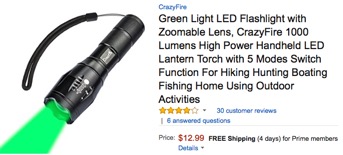Home
A comprehensive resource for safe and responsible laser use
US: Advisory committee recommends pilot procedures, training and glare protection
ARP6378™ has three main parts:
- A description of how lasers can interfere with pilots’ vision and operational performance, and how pilots can reduce adverse effects.
- A recommendation for pilot training, including exposure to safe, simulated laser light in a simulator or other realistic flying environment
- A description of Laser Glare Protection eyewear and windscreen film, with recommendations for whether and how to use these.
The document was developed by the SAE G10OL “Operational Laser” committee over a two-year period. It is available for purchase from SAE for $78. A three-page preview, which includes most of the Table of Contents except the appendices, is here.
From SAE ARP6378™, “Guidance on Mitigation Strategies Against Laser Illumination Effects”, published June 2 2018. Available from SAE.org.
Commentary by LaserPointerSafety.com
ARP6378 recommends that pilots receive training to recognize and recover from laser illuminations. If possible, pilots should experience bright light interference in a simulator so they know what to expect in a laser illumination. A safe, non-laser flashlight like the one below can be used to safely simulate a laser strike.
ARP6378 appears to be the first consensus document making a detailed recommendation for pilot training, including simulator time. The reason this is important is because pilots can successfully deal with laser illuminations if they know what to do. After all, the "attack" just uses light which can be defended against in most cases by blinking or looking away, and following the procedures listed in ARP6378.
While many pilot organizations have called for user education and restrictions on laser power or ownership, these have not yet been found to work. Rates in the U.S. and other countries have risen even after new laws criminalizing laser misuse or possession. (During 2017, U.S., pilots reported more than 18 laser illuminations every night, on average.)
Further, even if consumer lasers were severely restricted, bad actors could easily obtain and deliberately use lasers against aircraft.
For these reasons, pilots need to understand they are the "last line of defense" as stated in ARP6378. If properly trained, pilots can handle even strong, deliberate laser attacks.
(Note that the document does not address who should have the primary responsibility for requiring training: FAA, aircraft operators, or pilots via pilot associations.)
In addition to recommending training, ARP6378 also gives guidance on whether and when to use Laser Glare Protection such as eyewear or windscreen anti-laser film. For example, first responder pilots going after laser offenders would have a greater need for LGP than commercial pilots who may rarely encounter laser light and only for a short time. The document lists desirable LGP characteristics -- what to look for when considering glare protection — and how best to deploy LGP operationally.
ARP6378 provides pilots with reasons why visual interference (glare, flash blindness) during critical phases of flight can be hazardous, and why serious or permanent eye injuries are not likely and have not been documented by the U.S. FAA or the U.K. Civil Aviation Authority (CAA).
Information in this document is especially useful for first responders who may need to continue a mission or a rescue despite laser light interference.
The above material, plus additional material about the ARP6378 Scope, Rationale and Appendices can be read here. Note that LaserPointerSafety.com editor Patrick Murphy was co-chair of SAE G10OL and had input into ARP6378.
